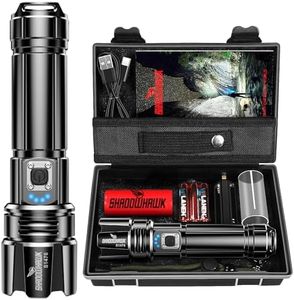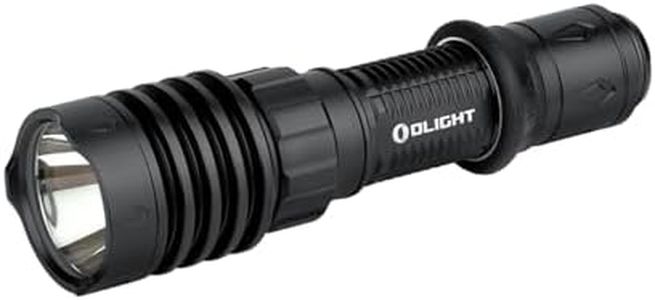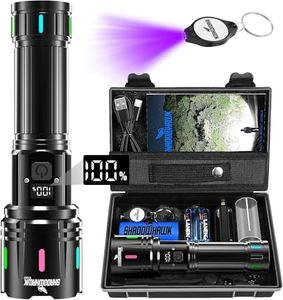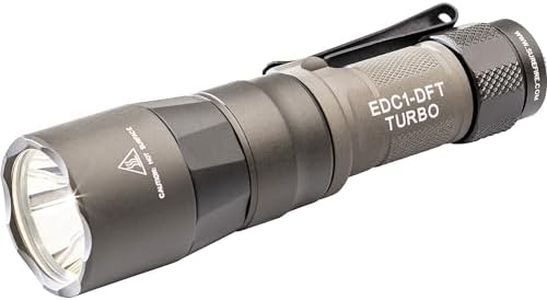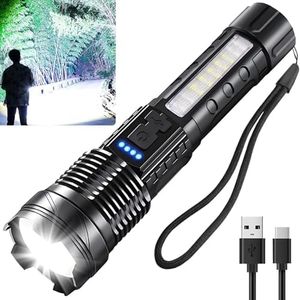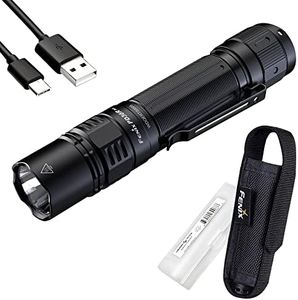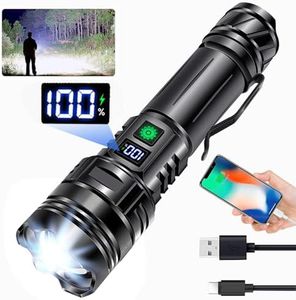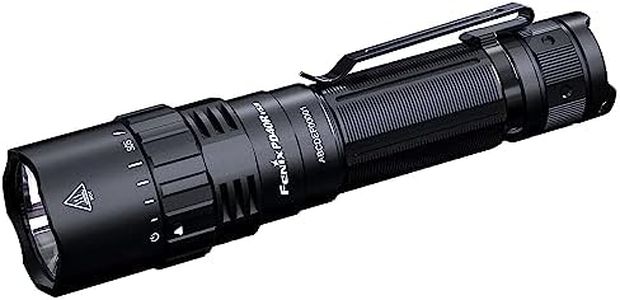We Use CookiesWe use cookies to enhance the security, performance,
functionality and for analytical and promotional activities. By continuing to browse this site you
are agreeing to our privacy policy
10 Best Most Powerful Flashlights
From leading brands and best sellers available on the web.By clicking on a link to a third party's website, log data is shared with that third party.
Buying Guide for the Best Most Powerful Flashlights
Choosing the most powerful flashlight goes beyond simply picking the brightest one. It's important to consider how and where you'll use it—whether it's for outdoor adventures, emergency preparedness, work tasks, or general household use. Different situations require different balances of power, size, battery life, and features. Understanding what matters most to you will help you select a flashlight that is both powerful and practical for your needs.Lumen OutputLumen output measures the total light the flashlight emits. Higher lumens mean a brighter light, but brighter is not always better for every situation. Flashlights under 300 lumens work well for close-range indoor use or reading. Those between 300 and 1000 lumens balance brightness and battery life, suitable for outdoor walks or tasks. Above 1000 lumens, you're looking at very powerful flashlights meant for search-and-rescue, camping, or illuminating long distances. Think about whether you really need intense brightness or if a moderate output is more practical for everyday use.
Beam DistanceBeam distance refers to how far the light can reach and illuminate objects effectively. Short beam distances (up to 50 meters) are ideal for indoor, close-range, or around-the-house needs, while mid-range beams (50-200 meters) suit camping or hiking. Over 200 meters, the flashlight is designed for search, rescue, or spotting objects at great distances. The right choice depends on whether you need a wide, even light for close tasks or a focused beam for seeing far ahead.
Battery Type and RuntimeThis spec describes what powers the flashlight and how long it can run. Some use disposable batteries, others have rechargeable built-in batteries. Rechargeable batteries are convenient and cost-effective for frequent use, while disposables are handy for occasional or emergency situations. Long runtime is important for camping or when you're away from charging sources, but ultra-powerful flashlights often use up batteries faster. Consider how often you’ll use it and if you’ll have chances to recharge or change batteries.
Size and WeightThe physical size and weight of a flashlight impact how easy it is to carry and handle. Pocket-sized models are lighter and fit easily in bags but may have less power or shorter battery life, while larger ones can be unwieldy but offer higher output and longer runtimes. Choose a size that matches your planned use—portable for on-the-go, larger for stationary or heavy-duty work.
Durability and Water ResistanceThis spec indicates how tough the flashlight is and whether it can withstand drops, rough use, or rain. Durability is marked by materials like metal or reinforced plastic, while water resistance is often described by an IP rating (e.g. IPX4 for splash resistance, IPX8 for full submersion). If you plan to use the flashlight outdoors or in tricky conditions, sturdier and more water-resistant models are wiser choices.
Modes and ControlsMany flashlights offer multiple light modes such as high, medium, low, strobe, or SOS. Modes enable you to adjust brightness and save battery as needed. Simple controls are easier for everyday or emergency use, while more advanced flashlights with lots of modes suit those who want versatility. Think about whether you’ll benefit from extra features or prefer straightforward operation.
